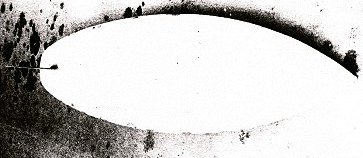Notes
1. The brief article is devoid
of any technical information, more like advertising copy.
2. The contention "right
foot forward surfers seem to stand up differently on a
board, putting them at advantage in respect to surfing
backhand." is very questionable.
The variation in stance and
body dimensions between riders appears to be a major
impediment to an objective analysis of a surfboard's
performance.
3. The design featured
asymmetrical down rails, enhanced rocker, a chamfered
square tail and small, finely foiled Greenough derived
fin.
4. Early Byron Bay models, as
seen in Morning of the Earth, circa1971, were
commonly glassed in grey/blue/white pigment laminates, see
#260.
5. Later models by Bennett's
Surfboards (Brookvale) and Nat Young Surf Design (Mona
Vale) were more likely decorated with spray colour
and glassed clear.
Also see:
Terry
Fitzgerald: Fanger-Ski
Tail, 1976.
Nat
Young with Pintail, Skydog and Backhand Square Tail, 1971.
Photograph : Alby Falzon
Tracks, circa 1972.
|
 |





